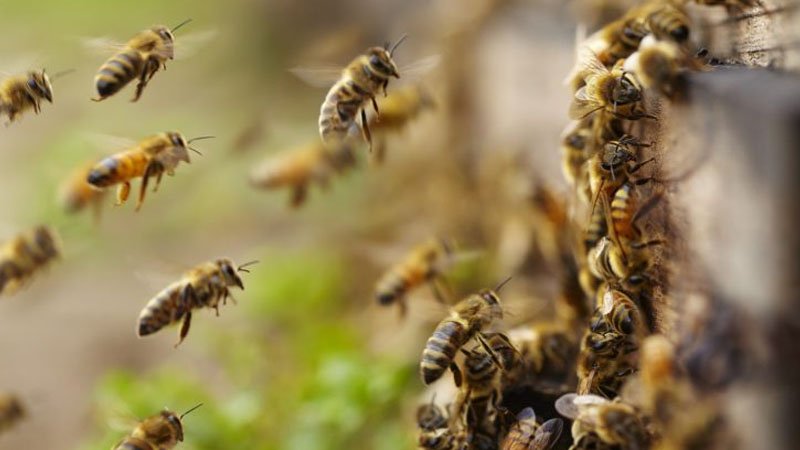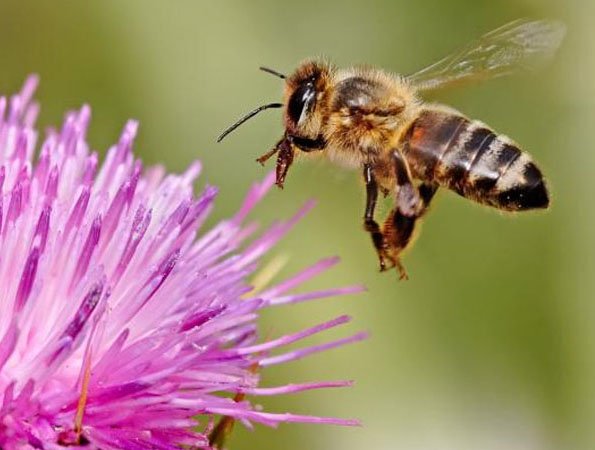
Oh, to be a bee.
They live in massive colonies that rival populations of medium-sized cities. They've never heard of Covid-19, and after a hard day's work, hang out with their friends with no concern for physical distancing or the current pitfalls of small family gatherings. Except for the fact that, other than their queen, they live only for about a month-and-a-half or so, it's a lifestyle that for the most part sounds pretty good about now.
Why not take a queue from bees and, with Covid probably still in the forefront when next year's golf season begins, and do something positive for the environment and the golf property in 2021 either by keeping bees or establishing areas to attract wild colonies with much-needed pollen-producing flora?
 Although raising bees is a popular hobby, about 200,000 Americans do it according to the U.S. Department of Agriculture, it hardly is a turnkey operation.
Although raising bees is a popular hobby, about 200,000 Americans do it according to the U.S. Department of Agriculture, it hardly is a turnkey operation.
University of Kentucky entomologist Dan Potter, Ph.D., who established the first Operation Pollinator zone in the U.S., said 50 percent hive loss every year is common from issues such as invasive parasitic pests like varroa mites and hive beetles.
"You can't just go do it without being committed to doing it right," Potter said. "They're not high maintenance, but a lot things can go wrong if you don't do it right."
Reed Johnson, Ph.D., entomologist at Ohio State University, says there are plenty of options to learn beekeeping.
"Get involved with a local beekeeper club. Every place has local bee clubs that understand conditions specific to your site," Johnson said. "They're very welcoming to new beekeepers. I'd also suggest finding a mentor who can give one-on-one advice. It is important to get hands-on training about what works and what doesn't in operating a colony."
That was the path superintendent Jeff Sexton followed at Evansville (Indiana) Country Club.
"I had a mentor who was the director of a nature preserve and a beekeeper," Sexton said. "He taught me what I needed to know."
Bee club meetings never fit into Fred Gehrisch's schedule at Highland Falls Country Club in Highlands, North Carolina, where he has been keeping bees since 2014.
"I watched Youtube videos," Gehrisch said. "There are a ton of them out there."
He's learned how to manage his hives, capture wild bee hives and how to deal with mites and beetles.
Hive beetles are an invasive species originally from Africa. Females lay their eggs in cracks in the hive. The beetle larvae eat the honey that is the bees' food source. In the pupa state, the beetles drop into the soil beneath the hive. When the newly formed adults emerge from the soil, the cycle begins anew.
Gehrisch treats the soil with a pyrethroid that kills the pupa and doesn't affect the bees. He controls the adults near the hives with traps that include a toxic boric acid solution. The bees stay on the boards and never come into contact with the traps. Next year, he plans to install a gravel bed underneath the hives, preventing the beetle larvae from reaching the soil.
All thanks to Youtube.
Mites are much more problematic. Native to Asia, these parasites feed on the bees' fat stores. Affected bees are weakened, have a shorter life cycle and have a harder time finding the hive, thus are less productive.
Several control options are available, some more effective than others, and none completely eliminate the problem.
These same issues affect wild bee colonies, however, ongoing studies are focused on learning whether wild colonies have a greater natural resistance to mites. One of the biggest threats facing bees that includes a pest of another sort entirely is loss of habitat, primarily to urban and suburban growth. Golf courses are ideal places to provide habitat including pollen-producing flowers to help bees produce honey they need for food. And those areas serve as an opportunity to educate the public about the positive environmental efforts of the golf course.
"We have limited opportunities to restore habitat to support wildlife," Potter said. "Golf courses are a fantastic pallet. They are big and there is a lot of land that is not in play. And this sort of activity reflects positively on the industry."
Native areas established with pollinators in mind should be just that - native.
"Native bees benefit more from native flowers. They need flowers that are indigenous to that area," Johnson said.
"Those native areas are the focal point of what the golf course is doing to support pollinators. The key on a golf course is the intentionality of it," Johnson said. "You have to tell people there is a reason for this spot, and it's not just some place you are letting go."

